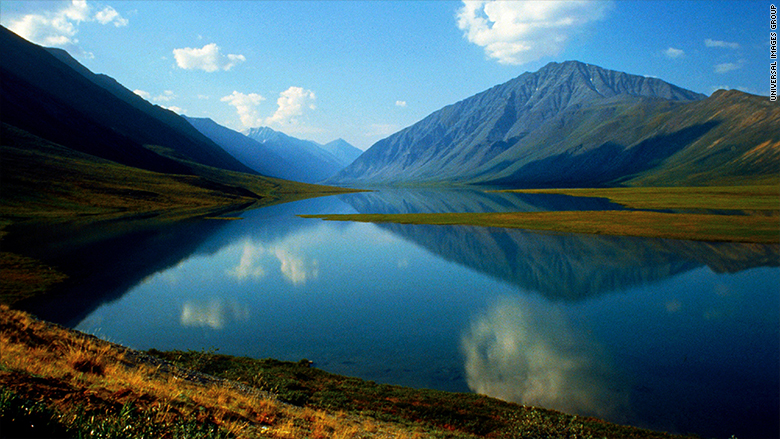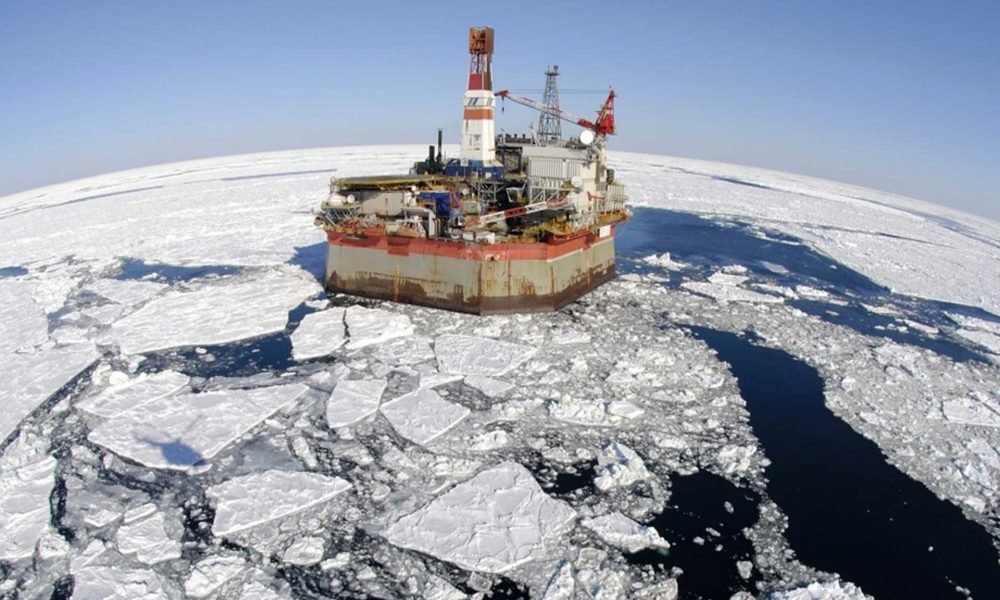
ACTION ALERT: Trump Authorizes Leases for Oil Drining in Arctic Refuge
Michael Brune / Sierra Club & Los Angeles Times & Bloomberg
(August 22, 2020) — The Trump Administration has just taken the most destructive path forward on development in the Arctic Refuge: leasing the most land to the highest bidder.
For years now, Donald Trump and his Interior Secretaries have been trying to open the pristine wilderness of the Arctic National Refuge to fossil fuel exploitation. And now — just as they’ve done with land near Arches, Bears Ears, Hovenweep, and thousands more acres of public land—they’re going to auction land in the Arctic National Wildlife Refuge.
The administration rushed through the review process for drilling in the Refuge’s coastal plain, and they’ve been tearing down the safeguards that protect the Refuge from oil and gas development — disregarding Indigenous rights and public wishes, and prioritizing oil and gas interests over people and wildlife.
The Trump administration won’t listen to reason — so we have other plans:
• We are pushing Bank of America to join Citibank, Morgan Stanley, Goldman Sachs, JP Morgan Chase and Wells Fargo and agree to stop financing Arctic drilling.
• We are demanding oil companies abandon their destructive plans to rip fossil fuels from the Arctic.
• We are working with Congress to enact permanent protections for this precious place.
• We will see the Trump administration in court to enforce the laws and protect the Arctic Refuge.
• We’re mobilizing our grassroots, training activists, and going to the banks to stop funding oil and gas drilling. We’re campaigning to protect lands in Congress. All we need to make this happen is you.
Oil and gas drilling in the Refuge—the ancestral homeland of the Gwich’in people, and critical habitat for the porcupine caribou herd which they hold sacred—would threaten Indigenous rights. It would worsen the climate crisis, which would in turn exacerbate sea level rise and imperil the habitats of birds, polar bears and other species. And it would harm local recreational and tourism interests that depend on this pristine wilderness.
Help protect the Arctic National Wildlife Refuge
We’re so grateful for your commitment to protecting the last wild, wonderful places. In this together, Michael Brune
Michael Brune is the Executive Director of the Sierra Club.

Trump Set to Open Arctic National Wildlife Refuge to Oil Drilling
(August 17, 2020) — The Trump administration on Monday authorized a sweeping plan to sell drilling rights and spur oil development in Alaska’s rugged Arctic refuge, setting up a possible auction by the end of 2020 and a political clash if the president loses the November election.
The Interior Department’s decision approves oil leasing across the Arctic National Wildlife Refuge’s entire 1.56-million-acre coastal plain — an area the size of Delaware that’s home to polar bears and caribou. Though Congress earmarked the area for possible energy development in 1980, it has remained off-limits to oil drilling for decades.
“The establishment of this program is a major milestone,” Interior Secretary David Bernhardt said in an interview. “It’s not the end of the leasing process, but it is a very, very significant milestone.”
The decision sets the stage for the federal government to auction Arctic drilling rights in the final quarter of 2020 — and a potential confrontation next year if President Trump doesn’t win re-election. Democratic nominee Joe Biden said he’s “totally opposed” to drilling in the Arctic refuge, having called the idea a “big disaster” in a February town hall meeting.
Trump didn’t commit to a sale during a Monday interview on Fox News. “We are looking at it,” he said, before adding, “we did do ANWR.”
Congress mandated an Arctic oil and gas program three years ago, with a law requiring Interior to sell drilling rights and facilitate development in the coastal plain. Under the 2017 Republican tax law, the Interior Department must hold at least one auction of coastal plain oil leases before Dec. 22, 2021, and another by Dec. 22, 2024. Congress also required Interior to issue rights-of-way and easements necessary to support oil exploration and production.
The record of decision Interior is issuing Monday is anchored by those congressional mandates, which Bernhardt said provide “far greater assurances to potential leaseholders” that they will have the ability to access, explore and develop operations.
The approach is meant to help buttress Trump’s Arctic oil plans that environmentalists have vowed to challenge in court, while making it harder for a future administration to reverse course.
“The record of decision is very strong and I think it will be a very durable program,” Bernhardt said. “The law as currently drafted says, ‘Thou shall act in a particular time frame irrespective of who is in the executive branch.’”
Environmentalists argue Arctic oil development imperils one of the world’s last truly wild places — a rugged wilderness in northeast Alaska populated by Arctic foxes, polar bears, caribou herds and more than 200 species of birds. Canada has repeatedly warned about the potential for harm to the Porcupine caribou herd that forages and calves in the area.
The Interior Department has acknowledged that its plans would affect large portions of critical habitat and denning areas for polar bears, including a dwindling Southern Beaufort Sea population. “The potential for injury or mortality could be high when developing new oil and gas projects in polar bear habitat,” Interior’s Bureau of Land Management said in an environmental analysis last year.
With its Monday decision, the Interior Department rejected narrower alternatives that would put less acreage up for grabs and impose more restrictions. The agency is establishing buffer zones around polar bear dens and timing limitations on activity during Porcupine caribou calving season, but conservationists have said the planned safeguards are inadequate.
The Interior Department still must issue a formal “call for nominations” seeking input on specific tracts and take public comment before scheduling a sale.
Under the approved plan, surface activity will be off-limits in 23% of the 1.56 million acres available for oil leasing. Timing limitations will be imposed on 37% of the area to help protect habitat and wildlife. Further site-specific limitations could be embedded in leases and future permits, Bernhardt said.
The Arctic refuge has long beckoned energy companies with the potential for discoveries that could produce oil for decades, rivaling output even from the mammoth Prudhoe Bay field nearby. The US Geological Survey has estimated the refuge’s coastal plain might hold 4.3 billion to 11.8 billion barrels of technically recoverable crude.
Yet it’s not clear how many oil companies will be eager to look for it now. Relatively few companies have the resources to mount costly operations in the remote region, and major US banks have sworn off financing Arctic oil projects in response to environmental pressure.
Some potential bidders, such as Oil Search Ltd., have recently pared operations as low crude prices and an epic downturn in fuel demand from the coronavirus outbreak spur companies to idle drilling rigs, shed staff and curtail new spending across the US
“Industry interest for the Arctic refuge is particularly hard to predict” as many companies have kept quiet, observed the progressive Center for American Progress, which opposes the administration’s plan. “They must weigh, among other things, the huge expense and risk of new development in the Arctic; the certainty of costly and protracted litigation; and the uncertainty of whether there are any oil and gas resources.”
Conservationists have vowed court challenges at every milestone on the long path to drilling. A future president who opposes Arctic drilling could slow-walk selling leases or permitting wells in the coastal plain. Though that resistance could in turn be challenged, the ensuing litigation might span years.
Already, concerns about polar bears and work schedules have prevented new geological surveys to better pinpoint potential oil reserves — foreshadowing future hurdles.
Posted in accordance with Title 17, Section 107, US Code, for noncommercial, educational purposes.